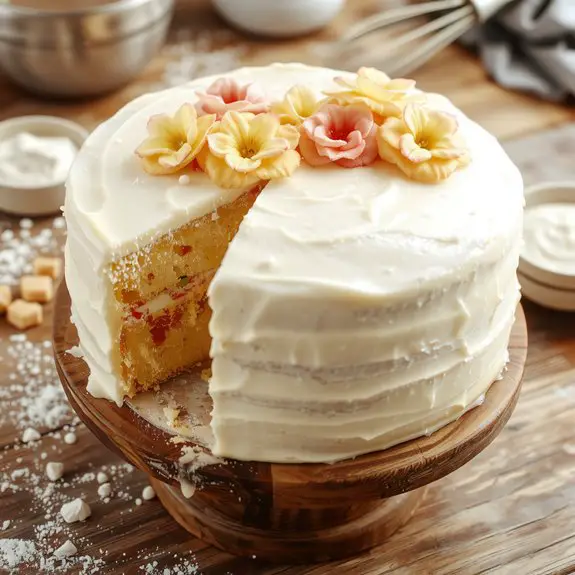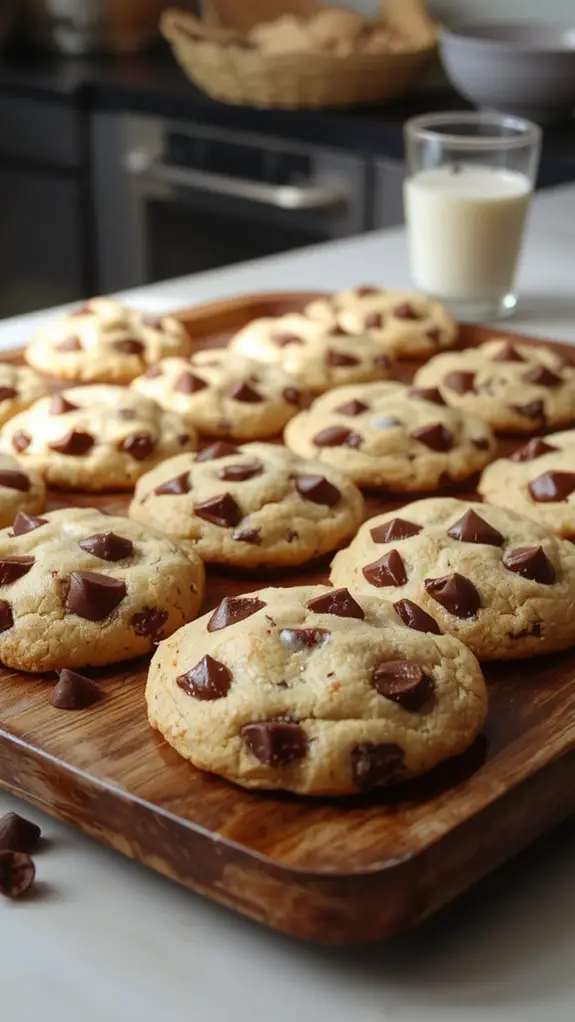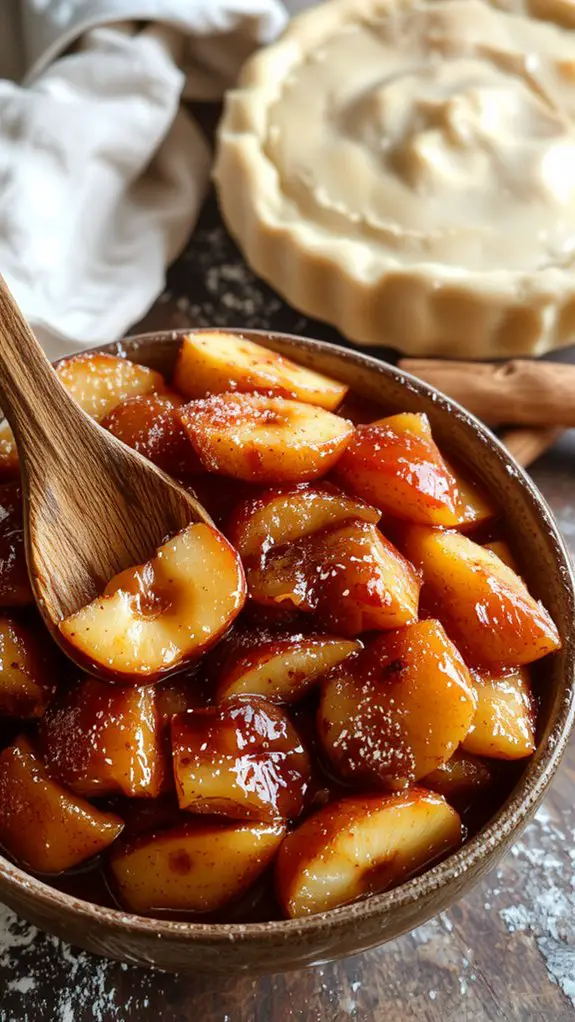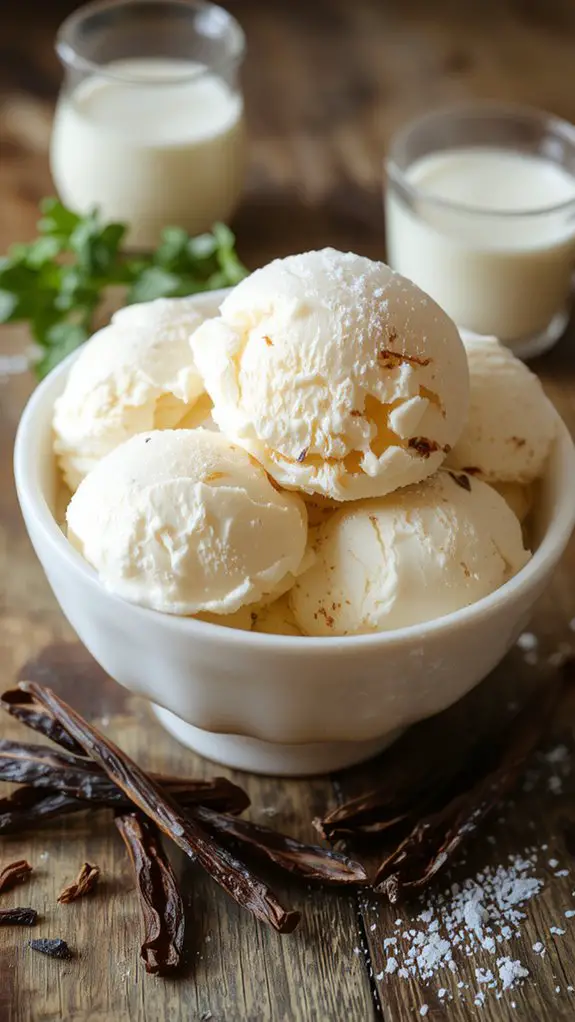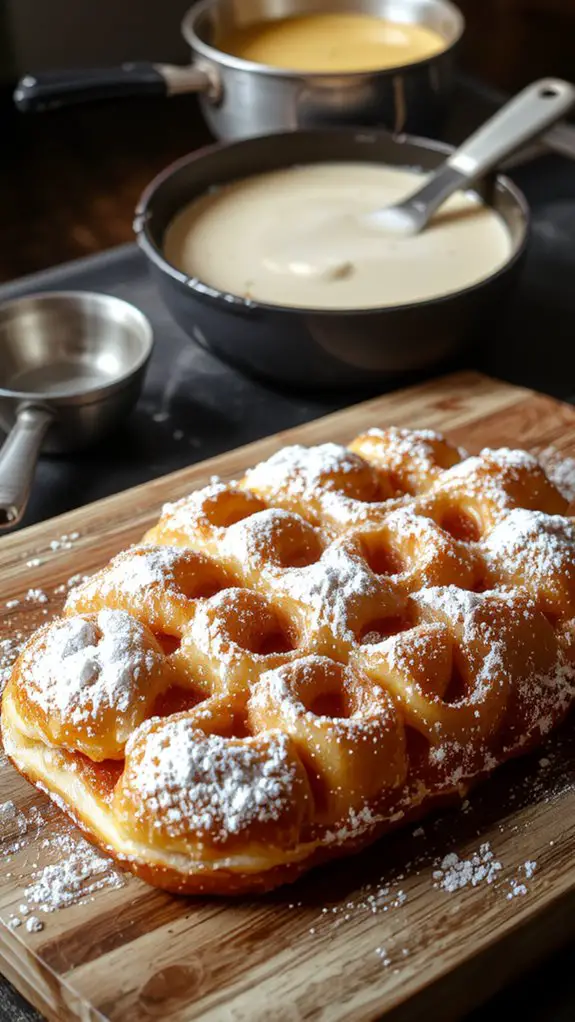Recipe
This is the ultimate vanilla cake recipe—trust me, it’s so good, it’ll become your go-to for every celebration (or just a Tuesday). I’ve made it countless times, and it never fails to impress.
What sets it apart? Real vanilla bean paste and buttermilk for that rich, aromatic flavor and a texture so tender it practically melts in your mouth.
My philosophy? A great cake should be simple but extraordinary, and this one nails it. Imagine a golden, fluffy crumb paired with a silky vanilla buttercream that’s just sweet enough to satisfy without overwhelming.
Whether you’re a baking pro or a beginner, this recipe is foolproof and totally worth the effort. You’ve got this—let’s bake!
Ingredients
Great vanilla cake starts with quality ingredients—each one plays a key role in texture and flavor. Here’s what you’ll need, plus insider tricks to make it shine:
Dry Ingredients:
- 1 ½ cups (190g) all-purpose flour – Spoon and level it to avoid a dense cake.
- 1 ½ tsp baking powder – Freshness matters! Check the date for maximum lift.
- ¼ tsp salt – Balances sweetness; skip at your own risk.
Wet Ingredients:
- ½ cup (113g) unsalted butter, room temp – Must be soft for a smooth batter. No microwave shortcuts!
- 1 cup (200g) granulated sugar – Fine-grain blends better.
- 2 large eggs, room temp – Cold eggs can curdle the batter.
- 2 tsp pure vanilla extract – Splurge on the real stuff—imitation will disappoint.
- ½ cup (120ml) whole milk – Sub with buttermilk for extra tenderness (or mix milk + ½ tsp vinegar).
Pro Upgrade:
– 1 vanilla bean (optional) – Scrape the seeds into the batter for next-level flavor.
Frosting (If Making From Scratch):
- 1 cup (226g) butter, softened – European-style butter = silkier texture.
- 3 cups (360g) powdered sugar – Sift to avoid lumps.
- 1 tbsp heavy cream or milk – Adjust for consistency.
- 1 tsp vanilla extract – Match the cake’s flavor profile.
Garnish (Optional but Fancy):
– Fresh berries, edible flowers, or a dusting of powdered sugar.
Key Tip: Measure flour correctly (weighing is best!) and use room-temp ingredients—this guarantees a tender, even crumb.
How to Make the Best Classic Vanilla Cake Recipe

• Preheat your oven to 350°F (175°C) and grease your cake pans.
Starting with a properly preheated oven guarantees even baking. Greasing the pans prevents sticking, so your cake slides out easily.
For extra insurance, line the bottoms with parchment paper.
• Cream softened butter and sugar together until light and fluffy.
Room-temperature butter blends smoothly with sugar, creating tiny air pockets that give the cake a soft, tender crumb.
Beat for 2-3 minutes—don’t rush this step!
• Add eggs one at a time, mixing well after each addition.
Incorporating the eggs gradually guarantees the batter stays emulsified and avoids curdling.
Scrape down the bowl to make sure everything is evenly combined.
• Mix in vanilla extract for that classic flavor.
Pure vanilla extract makes a world of difference here. It’s the star of the show, so don’t skimp!
• Whisk together your dry ingredients in a separate bowl.
Combining flour, baking powder, and salt separately guarantees even distribution.
Sifting can help eliminate lumps for a smoother batter.
• Alternate adding dry ingredients and milk to the butter mixture, starting and ending with dry ingredients.
This method prevents overmixing and keeps the batter tender.
Mix just until combined—overmixing can lead to a dense cake.
• Divide the batter evenly between prepared pans and smooth the tops.
Use a spatula to spread the batter evenly for a level cake.
Tapping the pans lightly on the counter removes any air bubbles.
• Bake for 25-30 minutes or until a toothpick inserted in the center comes out clean.
Ovens vary, so check a few minutes early.
The cake should spring back when lightly touched and pull away slightly from the edges.
• Let the cakes cool in the pans for 10 minutes, then transfer to a wire rack to cool completely.
Cooling in the pans prevents cracking, but removing them too late can cause condensation.
Patience is key!
• Frost and decorate once the cakes are completely cool.
Warm cakes melt frosting and make a mess.
Use your favorite buttercream, ganache, or whipped cream for the perfect finish.
Nutrition
Nutritional values can vary based on portion size and specific ingredients used. Below is an approximate breakdown for one serving of homemade vanilla cake:
| Nutrient | Amount per Serving |
|---|---|
| Calories | 250 kcal |
| Total Fat | 10 g |
| Saturated Fat | 6 g |
| Cholesterol | 50 mg |
| Sodium | 200 mg |
| Total Carbs | 35 g |
| Sugars | 20 g |
| Protein | 4 g |
Chef Tips
Although making a vanilla cake seems straightforward, I’ve found that a few simple tricks can elevate the final result. Always use room-temperature ingredients—they blend better.
Cream the butter and sugar until fluffy to incorporate air for a lighter texture. Sift dry ingredients to avoid lumps.
Don’t overmix the batter; stop as soon as it’s combined. Finally, preheat the oven properly for even baking. These steps guarantee perfection.
Frequently Asked Questions
Can I Use Vanilla Extract Instead of Vanilla Bean?
Yes, I can use vanilla extract instead of vanilla bean—it’s more convenient and still gives great flavor. I’ll just swap it in equal amounts, like using 1 teaspoon of extract for every bean.
How Do I Store Leftover Vanilla Cake?
I’ll wrap leftover vanilla cake tightly in plastic wrap or store it in an airtight container to keep it fresh. If it’s frosted, I’ll refrigerate it, but unfrosted can stay at room temperature for a couple days.
Can I Freeze This Vanilla Cake?
Yes, I can freeze this vanilla cake. I’d wrap it tightly in plastic wrap, then aluminum foil, or use an airtight container. I’ve found it keeps well for up to 3 months. Thaw it at room temperature before serving.
What Can I Use if I Don’T Have Buttermilk?
If I don’t have buttermilk, I’d mix a cup of milk with a tablespoon of lemon juice or vinegar and let it sit for 5 minutes. It curdles and works just like buttermilk in recipes.
How Do I Prevent My Cake From Drying Out?
I’ll make sure I don’t overbake my cake—I’ll check it early and pull it out when a toothpick’s moist crumbs cling. I’ll also wrap it tightly in plastic once it’s cooled to lock in moisture.


